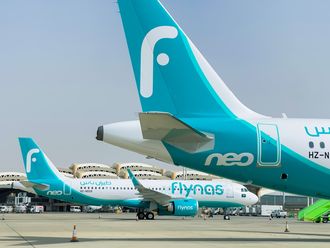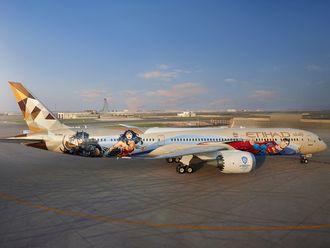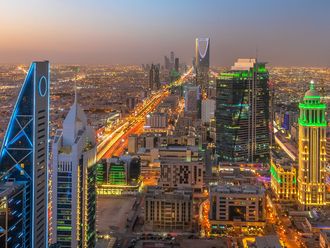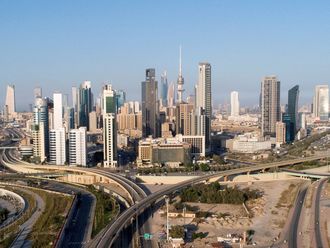
Dubai: Buoyed by 10 new flights in the highly valued Indian market, flydubai CEO Ghaith Al Ghaith said the India question was slowly, but steadily, being answered.
Flydubai currently has a capacity of six points in India — the new stops being New Delhi, Kochi and Thiruvananthapuram — with a total of 19 frequencies. This translates into a total allotment of 5,140 seats, in 1,400 flights, of which they are using 3.441 and must complete the quota by 2015. Prior to these new stops flydubai was operating from the cities of Lucknow, Ahmedabad and Hyderabad.
Al Ghaith is hopeful that this business will grow, given that in 2013 India became Dubai’s top trading partner thanks to a $37 billion volume. The UAE is also India’s top export destination, accounting for more than 10 percent of its tangible exports.
“The new stopovers are significant,” said Al Ghaith in an interview to Gulf News. “We have waited at least five years to secure these new points. I hope we will not have to wait that long to get extra capacity.
He said that bilateral trade and social relationship between these two countries is by far the biggest in terms of volume and importance.
“We aspire to get more routes, especially in the smaller airports, where there is little or no service. We can operate in as many secondary airports as is allowed by the Indian authorities.”
Mindful that changing governments sometimes impact the aviation sector and people-to-people contact, Al Ghaith stated that the new stops come at a significant moment when a new government in India, under the stewardship of Narendra Modi, takes charge.
“We are extremely optimistic,” he said. “I think the tone and the encouraging words that we hear rings in our ears. This is how we believe that business is done — by empowering people and opening up processes. This is good for the consumer and for business.”
Al Ghaith said he believes the governments must step out of regulating the travel business.
“Of course, they must focus on issues like security and traffic rights. Those are different dynamics and the authorities will always look at what is best. But the markets must determine the scope of the business. The more one opens up the better it is for the consumer and for the country.”
Al Ghaith’s India strategy is not just to serve the principal airports that dot the country but, more importantly, cater to the secondary ones. He refuses to come up with a magic number because, “That’s up to the governments. Our job is only to encourage and get more. What we have currently, 5,140 seats, is little given the scope and potential before us.
"We need more and can operate more flights to and from India. I also believe that judging by the number of seats available can be a bit misleading. We should talk about the number of flights. India has more than 30 international airports so there should be more access. We have not encountered any problem in doing business with the Indian authorities. We believe that they are open to trade and commerce and in our dictionary this means more flights. The UAE and Indian government has signed a business protection agreement which is useful for current and future transactions as well.”
With flydubai completing five years of service, starting at a time when the global airline industry was in turmoil and going on to buck the trend by becoming a profit making venture, Al Ghaiths immediate focus is on the next years which dovetail into the UAE hosting the world Expo in 2020.
“We have already ordered a total of 111 aircraft worth $13 billion. This is a statement of intent on our part,” he endorsed. “We have a tremendous opportunity on our hands. With the world being attracted to Dubai, the government is currently driving the construction of 3-4 star hotels. Parallel to this we seek to get more access to regional countries because they form the pool that will cater to this product category. An airline like flydubai can connect people to these facilities. The traffic, in future, will come from shorter distances. So the philosophy is, give us an airport within a flying radius of five hours and we will be there.”












